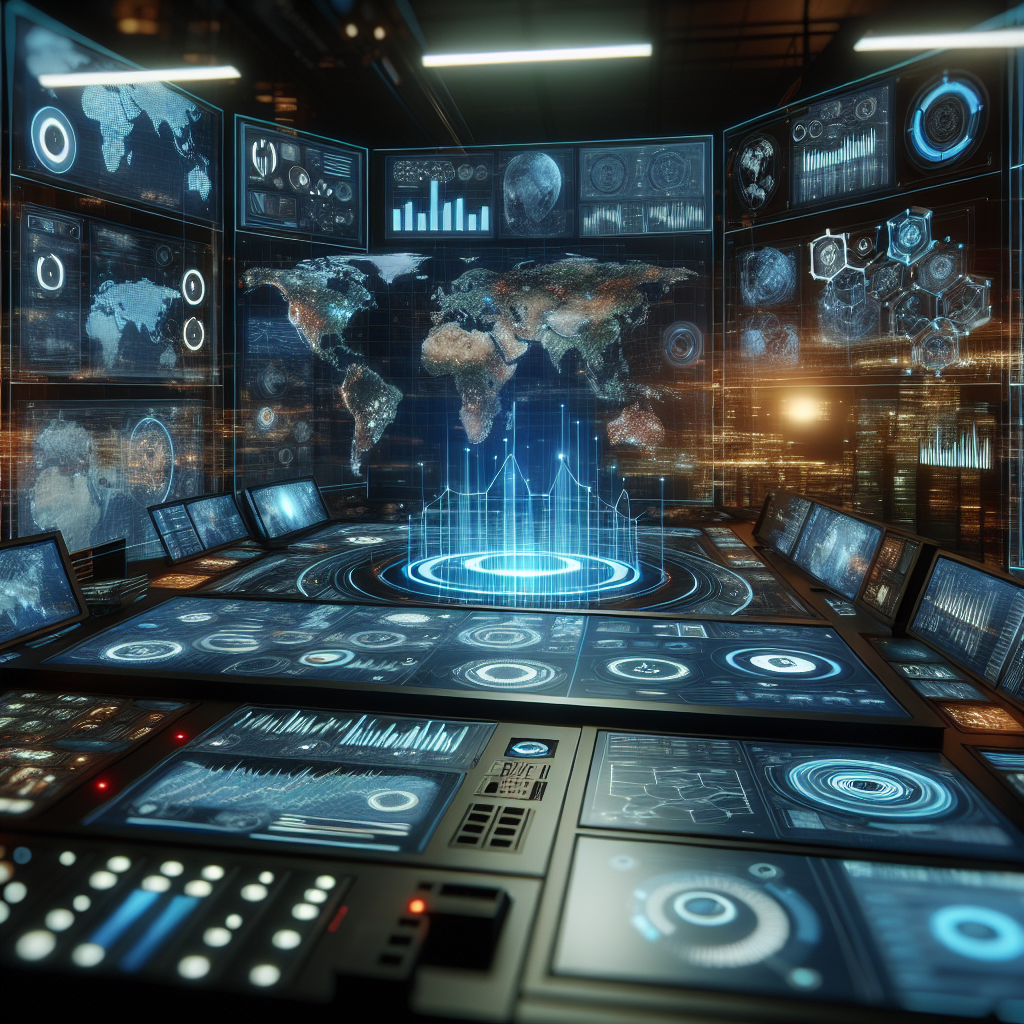Border security is a critical aspect of national security for countries around the world. With the increasing globalization and movement of people and goods across borders, it has become more challenging for authorities to effectively monitor and control their borders. In recent years, there has been a growing interest in the use of Artificial Intelligence (AI) technology to enhance border security measures.
AI has the potential to revolutionize the way border security is managed by providing advanced capabilities for monitoring, analyzing, and responding to threats in real-time. From facial recognition technologies to automated surveillance systems, AI-powered solutions offer a range of tools that can help border security agencies to improve their efficiency and effectiveness in protecting their borders.
One of the key areas where AI is making a significant impact on border security is in the detection of unauthorized border crossings. AI-powered surveillance systems can analyze data from various sources, such as cameras, drones, and sensors, to detect and track suspicious activities along the border. By using machine learning algorithms, these systems can identify patterns and anomalies in the data that may indicate the presence of unauthorized individuals or vehicles.
Moreover, AI can also be used to enhance the screening and identification of travelers at border checkpoints. Advanced biometric recognition systems powered by AI can quickly and accurately verify the identities of individuals using facial recognition, fingerprint scanning, or iris scanning technologies. This helps border security agencies to identify potential threats and prevent the entry of unauthorized persons into the country.
In addition to physical border security measures, AI can also play a crucial role in enhancing cybersecurity at border checkpoints. With the increasing reliance on digital technologies for border control, there is a need for robust cybersecurity measures to protect sensitive data and systems from cyber threats. AI-powered cybersecurity solutions can analyze network traffic, detect suspicious activities, and respond to potential cyber attacks in real-time, thereby enhancing the overall security of border control systems.
Furthermore, AI can also support border security agencies in decision-making processes by providing predictive analytics and risk assessment capabilities. By analyzing vast amounts of data from various sources, AI algorithms can identify potential threats, assess risks, and recommend appropriate actions to mitigate security risks. This can help border security agencies to make more informed decisions and allocate resources more effectively to address security challenges.
Despite the significant benefits that AI can bring to border security, there are also concerns and challenges associated with its use. One of the main concerns is the potential misuse of AI technologies for surveillance and monitoring of individuals, raising privacy and ethical issues. There is a need for clear regulations and guidelines to ensure that AI is used responsibly and ethically in border security applications.
Moreover, there are also concerns about the accuracy and reliability of AI algorithms in detecting and identifying threats. Biases in AI algorithms can lead to false positives or false negatives, which may result in errors in decision-making and potential security breaches. Border security agencies need to ensure that AI systems are properly trained and tested to minimize these risks and improve their performance.
Despite these challenges, the role of AI in border security is expected to continue to grow in the coming years as technology advances and new applications are developed. By harnessing the power of AI, border security agencies can enhance their capabilities, improve their effectiveness, and better protect their borders from security threats.
FAQs:
1. What are the main benefits of using AI in border security?
– AI can enhance border security by providing advanced capabilities for monitoring, analyzing, and responding to threats in real-time.
– AI-powered surveillance systems can detect and track suspicious activities along the border, helping to identify unauthorized border crossings.
– AI-powered biometric recognition systems can verify the identities of travelers at border checkpoints, improving security screening processes.
– AI-powered cybersecurity solutions can detect and respond to cyber threats, enhancing the overall security of border control systems.
– AI algorithms can provide predictive analytics and risk assessment capabilities, helping border security agencies to make more informed decisions and allocate resources more effectively.
2. What are the main concerns and challenges associated with using AI in border security?
– Privacy and ethical concerns related to the potential misuse of AI for surveillance and monitoring of individuals.
– Accuracy and reliability concerns related to biases in AI algorithms, leading to potential errors in decision-making and security breaches.
– Regulatory and legal challenges related to the use of AI in border security, requiring clear guidelines and regulations to ensure responsible and ethical use of AI technologies.
3. How can border security agencies address the concerns and challenges associated with using AI?
– Implement clear regulations and guidelines to ensure responsible and ethical use of AI technologies in border security applications.
– Ensure proper training and testing of AI systems to minimize biases and improve accuracy and reliability.
– Collaborate with experts in AI ethics and privacy to address concerns related to the misuse of AI for surveillance and monitoring.
– Continuously monitor and evaluate the performance of AI systems to identify and address potential security risks and improve effectiveness.
In conclusion, AI has the potential to revolutionize the way border security is managed by providing advanced capabilities for monitoring, analyzing, and responding to threats in real-time. By harnessing the power of AI, border security agencies can enhance their capabilities, improve their effectiveness, and better protect their borders from security threats. However, there are also concerns and challenges associated with the use of AI in border security, which need to be addressed through clear regulations, proper training, and collaboration with experts in AI ethics and privacy. As technology advances and new applications are developed, the role of AI in border security is expected to continue to grow, shaping the future of border security operations.

